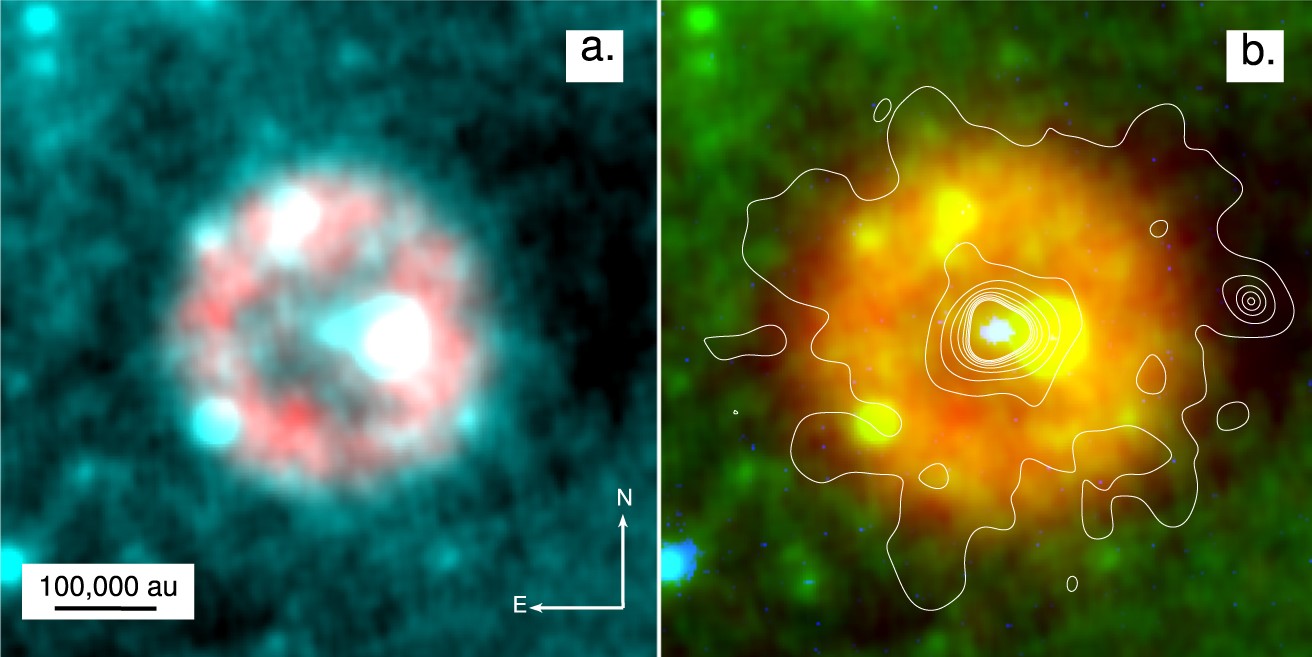To date, astronomers have discovered only one other supernova remnant of this rare type.
Astronomers have found a supernova remnant that was noticed in the sky back in 1181 by Chinese and Japanese observers. It turned out that the supernova belongs to the rare type Iax and, most likely, was the result of a collision of two white dwarfs, which makes it a unique object for further study.
Astronomers discovered a supernova remnant that was spotted nearly 900 years ago: Everything you need to know
Supernovae in the Milky Way
Over the past millennium, only five bright supernovae have been observed in the Milky Way. One of them was the outbreak recorded on August 6, 1181, by Chinese and Japanese astronomers, who saw a new star in the sky, comparable in brightness to Saturn, remaining visible for 185 days. Plerion was previously thought to be the remnant of this supernova.

Age
However, when it comes to G130.7 + 3.1 (better known as SN 1181), astronomers have estimated the age of this nebula at 7000 years, based on radio observations over more than twenty years. At the same time, the age of its pulsar has been estimated at 5400 years.
Youngest supernova with a remnant
This made SN 1181 the youngest galactic supernova without a proven remnant, which does not give astronomers the opportunity to accurately determine the type of supernova, and therefore the mechanism of the explosion and the properties of the progenitor star.
Pa30 nebula
A group of astronomers led by Andreas Ritter from the University of Hong Kong reported that they managed to find the remnant of a supernova in 1181 – it was the Pa30 nebula.

Data analysis
In their search, scientists used multiwave observational data from ground-based telescopes GTC (Gran Telescopio Canarias) and WIYN and space telescopes Gaia, Swift, XMM-Newton, WISE, and GALEX, as well as historical reports from Chinese and Japanese astronomers.
Pa30 is expanding
Pa30 was discovered on August 25, 2013, and the nebula is a bright source of diffuse X-rays. It is expanding at a speed of over 1100 km per second, and its central star is poor in both hydrogen and helium and has a unique line spectrum of radiation. The nebula itself is rich in neon, magnesium, silicon, and sulfur.
An unusual type of supernova
All this points to an unusual type of supernova – Iax, which is considered very rare. To date, only one confirmed galactic supernova remnant of this type is known, it is believed that this is a thermonuclear explosion of a white dwarf, during which it is not completely destroyed.

What caused the supernova remnant?
In this case, the explosion was most likely caused by the collision of two white dwarfs.
Distance
If we take into account that the distance to Pa 30 is 2.3 kiloparsecs, and the estimate of the supernova remnant’s diameter is 2.2 parsecs, then the kinematic age of the nebula is about 990 years.
Positions
Combined with the consistency between the positions of the nebula and the position of the nova seen by ancient astronomers, this makes it possible to assert that the supernova remnant of 1181 has indeed been found and is the second galactic representative of the Iax type. Thus, scientists have a unique opportunity to study the remnant in detail and learn a lot about this type of supernova.
Sources:
• Carter, J. (2021, September 16). A supernova that stunned stargazers in the year 1181 has finally been found-and it’s a ‘zombie’ star. Forbes.
• Ritter, A., Parker, Q. A., Lykou, F., Zijlstra, A. A., & Guerrero, M. A. (2021, September 15). The Remnant and Origin of the Historical Supernova 1181 AD. The Astrophysical Journal Letters.
• ScienceDaily. (2021, September 15). Astronomers solve 900-year-old COSMIC mystery SURROUNDING chinese supernova Of 1181ad.
• Tonkin, S. (2021, September 15). Supernova first spotted over China in 1181 is solved after 900 years. Daily Mail Online.





